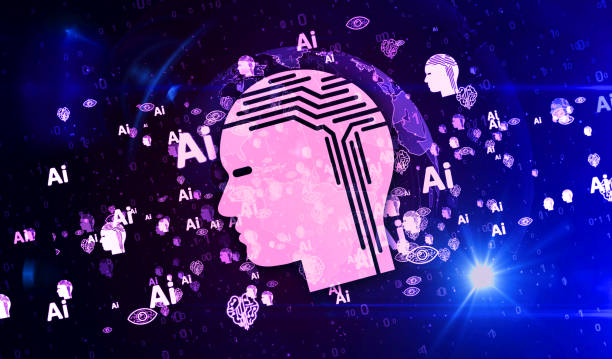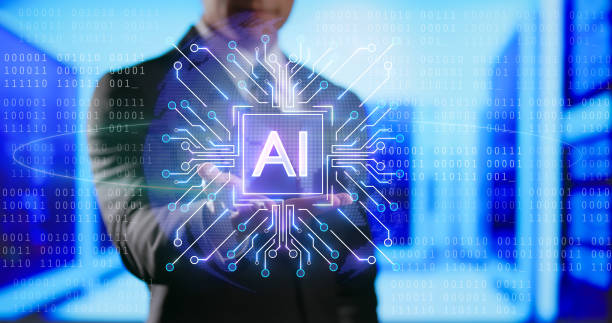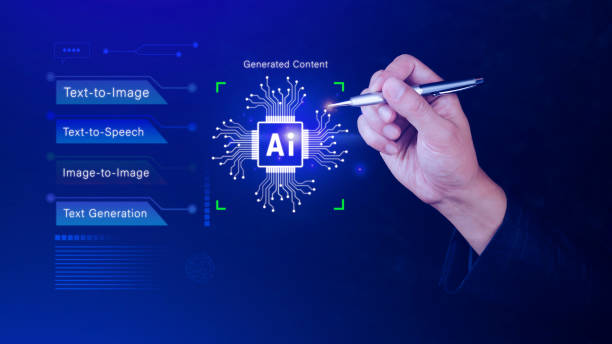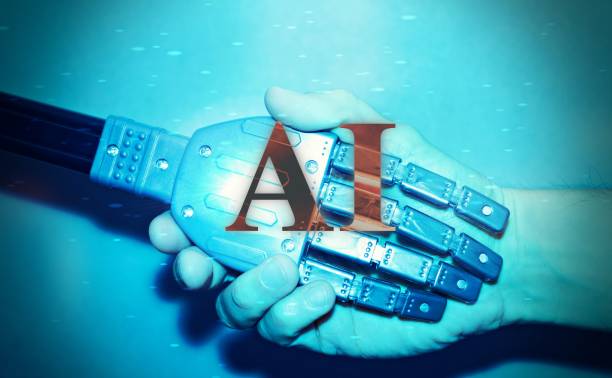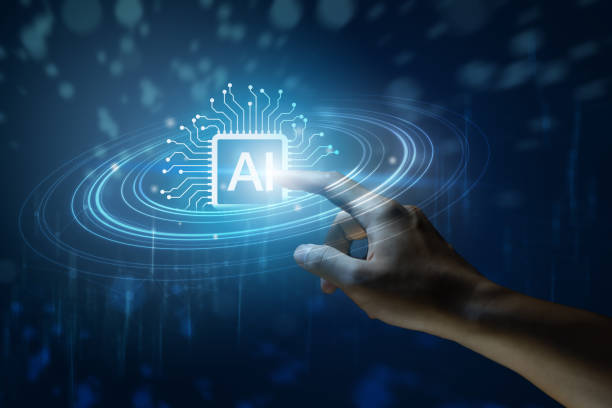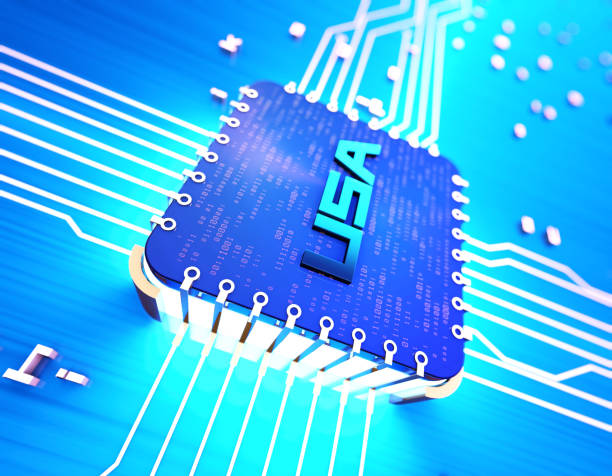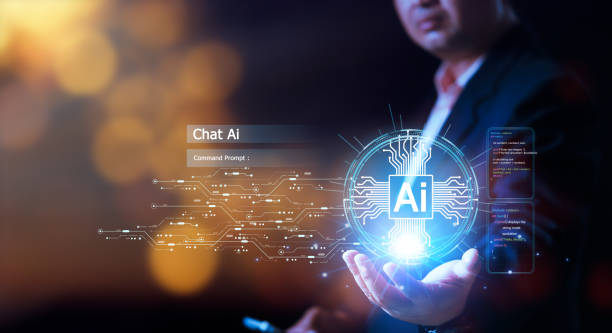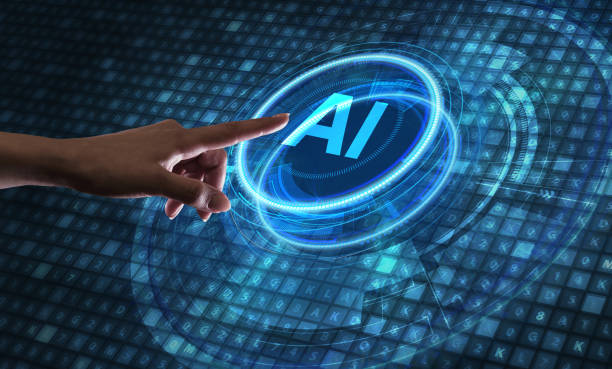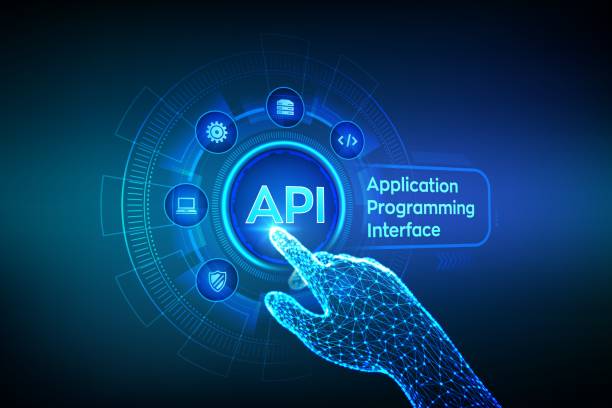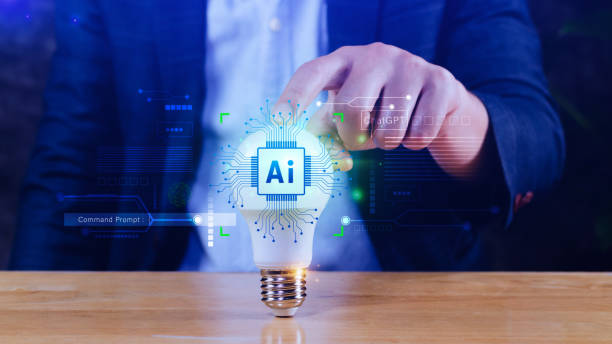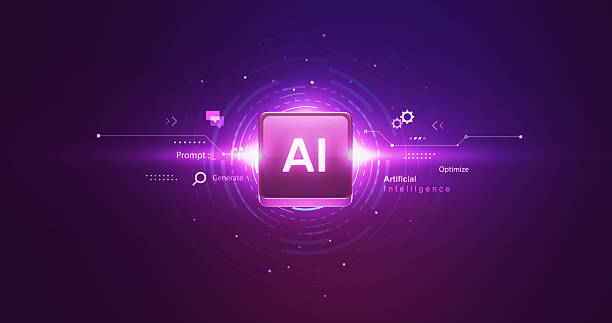What is an Artificial Intelligence Robot and What are its Applications?
An Artificial Intelligence Robot is a combination of two key concepts: #Artificial_Intelligence and #Robotics.
Simply put, these robots are machines that, using artificial intelligence algorithms, are capable of performing tasks that usually require human intelligence.
These tasks can include learning, reasoning, problem-solving, pattern recognition, and decision-making.
In other words, an AI robot is an intelligent agent that can sense its surroundings, process information, and make decisions and act based on that.
The applications of Artificial Intelligence Robots are very extensive and have affected almost all industries.
In the manufacturing industry, these robots are used to automate production lines, control quality, and perform repetitive and dangerous tasks.
In the field of healthcare, surgical robots, nurse robots, and AI-based disease detection systems help doctors provide better services to patients.
In the customer service industry, chatbots and virtual assistants use artificial intelligence to answer customer questions and solve their problems.
In the field of education, intelligent educational systems and teacher robots can improve the learning experience for students.
And finally, in the field of entertainment, toy robots and artist robots can add creativity and fun to people’s lives.
In summary, an Artificial Intelligence Robot is a powerful tool that can improve our lives and work in many ways.
With the increasing progress of artificial intelligence and robotics, it is expected that the applications of these robots will become much wider and more complex in the near future.
Are you worried about losing customers because you don’t have a professional online store?
Forget these worries by designing an online store with Rasaweb!
✅ Significant increase in sales and visitor-to-customer conversion rate
✅ Professional and user-friendly design that earns customer trust
⚡ Get free consultation from Rasaweb
Main Components of an Artificial Intelligence Robot
An Artificial Intelligence Robot consists of several main components that, working together, enable it to perform intelligent tasks.
These components include:
- Sensors Sensors are devices that collect information from the environment.
This information can include visual data (through cameras), audio data (through microphones), tactile data (through touch sensors), and data related to temperature, pressure, and other environmental factors. - Processor The processor is the brain of the robot and is responsible for processing the information collected by the sensors, executing artificial intelligence algorithms, and generating instructions for the actuators.
- Memory Memory is used to store information, data, and algorithms needed for the robot to function.
- AI Algorithms These algorithms are the heart of an Artificial Intelligence Robot and are responsible for learning, reasoning, problem-solving, and decision-making.
- Actuators Actuators are devices that allow the robot to interact with its environment.
These actuators can include motors, arms, hands, wheels, and other mechanical components. - Power Source The power source provides the energy needed for all the robot’s components to function.
These components, working together, enable an Artificial Intelligence Robot to sense its surroundings, process information, make decisions, and act.
Types of Artificial Intelligence Algorithms Used in Robots
Artificial Intelligence Robots use a variety of algorithms to perform intelligent tasks.
Some of the most important of these algorithms include:
- Machine Learning These algorithms allow the robot to learn from data and improve its performance over time.
There are different types of machine learning algorithms, including supervised learning, unsupervised learning, and reinforcement learning. - Neural Networks These algorithms are inspired by the structure of the human brain and are used for pattern recognition, data classification, and prediction.
- Natural Language Processing (NLP) These algorithms allow the robot to understand and interact with human language.
- Computer Vision These algorithms allow the robot to understand images and videos and recognize objects and patterns.
- Planning These algorithms allow the robot to plan a series of actions to achieve a goal.
Click here to preview your posts with PRO themes ››
The choice of the appropriate algorithm depends on the type of task the robot has to perform.
For example, a robot designed for facial recognition uses computer vision and neural network algorithms, while a robot designed to converse with humans uses natural language processing algorithms.
| Algorithm | Application |
|---|---|
| Machine Learning | Pattern recognition, prediction, classification |
| Neural Networks | Pattern recognition, image processing, language processing |
| Natural Language Processing | Understanding human language, generating text |
Advantages and Disadvantages of Using Artificial Intelligence Robots
The use of Artificial Intelligence Robots has many advantages, including:
- Increased Productivity Robots can perform tasks faster and more accurately than humans.
- Reduced Costs Robots can reduce labor costs.
- Improved Safety Robots can perform dangerous tasks without endangering human lives.
- Increased Quality Robots can perform tasks consistently with high quality.
However, the use of Artificial Intelligence Robots also has disadvantages, including:
- High Initial Cost Purchasing and deploying robots can be costly.
- Need for Expertise Expertise is needed to program, maintain, and repair robots.
- Job Loss Automation can lead to the loss of human jobs.
- Ethical Concerns The use of robots raises several ethical questions.
In general, the advantages of using Artificial Intelligence Robots outweigh their disadvantages.
However, it is important to consider the disadvantages as well and plan to mitigate their negative effects.
Is your online sales not as expected? With Rasaweb, solve the problem of low sales and poor user experience forever!
✅ Increase the conversion rate of visitors to customers
✅ Create an enjoyable user experience and increase customer trust
⚡ Take action now to receive free consultation!
Applications of Artificial Intelligence Robots in Various Industries
Artificial Intelligence Robots have extensive applications in various industries.
Some of the most important of these applications include:
- Manufacturing Industry Automation of production lines, quality control, material transportation
- Healthcare Surgery, nursing, disease diagnosis, rehabilitation
- Customer Service Chatbots, virtual assistants
- Transportation Self-driving cars, drones
- Education Intelligent educational systems, teacher robots
- Agriculture Harvesting, irrigation, spraying
- Military Combat robots, reconnaissance robots
These are just a few examples of the applications of Artificial Intelligence Robots in various industries.
With the increasing progress of artificial intelligence and robotics, it is expected that the applications of these robots will become much wider and more diverse in the near future.
What Will the Future of Artificial Intelligence Robots Be?
The future of Artificial Intelligence Robots looks very bright and exciting.
With the increasing progress of artificial intelligence, robots are expected to become smarter, more capable, and more autonomous.
This will lead to enormous changes in various industries and human lives.
Some predictions about the future of Artificial Intelligence Robots include:
- Expansion of Automation Robots will automate many tasks in various industries.
- Increased Human-Robot Collaboration Humans and robots will work together to increase productivity and quality.
- Development of Personal Robots Robots will become an integral part of our daily lives, helping us perform various tasks.
- More Ethical Concerns With the advancement of robots, ethical concerns related to them will also increase.
Click here to preview your posts with PRO themes ››
In general, the future of Artificial Intelligence Robots is full of opportunities and challenges.
It is important to be prepared for this future and benefit from its advantages, while also mitigating its negative effects.
How to Build an Artificial Intelligence Robot?
Building an Artificial Intelligence Robot can be a challenging but very rewarding project.
The general steps to building an Artificial Intelligence Robot are:
- Define the Goal Specify what you want your robot to do.
- Choose Hardware The required hardware includes sensors, actuators, a processor, and a power source.
- Choose Software The required software includes an operating system, artificial intelligence libraries, and a programming language.
- Programming Program the artificial intelligence algorithms and control the robot.
- Testing and Evaluation Test the robot and evaluate its performance.
- Improvement Improve the robot to optimize its performance.
There are many resources for learning how to build an Artificial Intelligence Robot, including books, online courses, and online communities.
| Step | Description |
|---|---|
| Define the Goal | Specify what the robot should do |
| Choose Hardware | Select sensors, actuators, processor, and power source |
| Choose Software | Select the operating system, artificial intelligence libraries, and programming language |
Challenges Facing the Development of Artificial Intelligence Robots
The development of Artificial Intelligence Robots faces several challenges.
Some of the most important of these challenges include:
- Complexity Building intelligent robots is very complex and requires knowledge and expertise in various fields.
- Cost Developing and manufacturing robots can be costly.
- Security Robots may be hacked and misused.
- Ethics The use of robots raises several ethical questions.
- Social Acceptance Some people may oppose the use of robots.
Overcoming these challenges is essential for the successful development of Artificial Intelligence Robots.
Are you tired of losing business opportunities due to not having a professional company website?
Rasaweb helps you by designing a professional company website:
✅ Build a powerful and reliable image of your brand
✅ Convert website visitors into loyal customers
⚡ Get a free consultation right now!
The Impact of Artificial Intelligence Robots on Employment
The impact of Artificial Intelligence Robots on employment is a controversial topic.
Some experts believe that automation will lead to the loss of human jobs, while others believe that automation will create new jobs.
In general, it is expected that automation will eliminate some repetitive and routine jobs, but at the same time, it will create new jobs in areas such as the development, maintenance, and repair of robots.
Also, automation can increase productivity and economic growth, leading to new job opportunities in other industries.
To mitigate the negative effects of automation on employment, governments and organizations need to adopt policies that help people learn new skills and prepare for new jobs.
Useful link Artificial Intelligence in Wikipedia
Ethical Considerations in the Use of Artificial Intelligence Robots
The use of Artificial Intelligence Robots raises several ethical questions.
Some of the most important of these questions include:
- Accountability Who is responsible for the robot’s performance?
- Privacy Robots can collect a lot of information about us.
How can we protect our privacy? - Bias Artificial intelligence algorithms may be biased and make unfair decisions.
- Security Robots may be hacked and misused.
To address these ethical issues, it is necessary to develop laws and regulations for the use of Artificial Intelligence Robots.
Click here to preview your posts with PRO themes ››
FAQ
| Row | Question | Answer |
|---|---|---|
| 1 | What is an artificial intelligence robot? | An AI robot is a machine capable of understanding, reasoning, learning, and problem-solving, and can perform complex tasks with relative autonomy. |
| 2 | What are the most important applications of artificial intelligence robots? | The main applications include industrial manufacturing, customer service (chatbots), medicine and surgery, self-driving transportation, space exploration, and military affairs. |
| 3 | What is the main difference between an artificial intelligence robot and a regular robot? | A regular robot only follows programmed instructions, while an AI robot can learn from data, make decisions, and adapt to new environments. |
| 4 | How do artificial intelligence robots learn? | They learn through machine learning algorithms (such as deep learning, reinforcement learning) and processing a vast amount of data, identify patterns, and improve their performance. |
| 5 | Can artificial intelligence robots have emotions? | Currently, artificial intelligence robots do not have real emotions in the human sense. They can mimic or recognize emotions, but they do not understand and experience them. |
| 6 | What are the current limitations of artificial intelligence robots? | Limitations include the need for large amounts of data, the inability to understand abstract concepts, the lack of real creativity, ethical issues, and the challenges of generalizability in new environments. |
| 7 | What is the role of artificial intelligence in the development of humanoid robots? | Artificial intelligence helps humanoid robots walk, maintain balance, understand their surroundings, interact with humans, and perform complex tasks. |
| 8 | How is the future of artificial intelligence robots predicted? | Artificial intelligence robots are predicted to become smarter, more autonomous, and capable of performing more complex tasks in everyday life and industry, and their interaction with humans will increase. |
| 9 | Can artificial intelligence robots replace all human jobs? | It is unlikely that all human jobs will be replaced. Robots will take over many repetitive and dangerous tasks, but jobs that require creativity, empathy, and moral judgment will remain. |
| 10 | What ethical and social challenges arise with the expansion of artificial intelligence robots? | Challenges include issues related to privacy, data security, ethical decision-making by robots, the impact on employment, and accountability in the event of an error. |
And other services of Rasa Web Advertising Agency in the field of advertising
Smart Sales Automation: A combination of creativity and technology to increase website visits through intelligent data analysis.
Smart Marketing Automation: A new service to increase customer acquisition through SEO-driven content strategy.
Smart Digital Branding: A new service to increase campaign management through user experience customization.
Smart Direct Marketing: Transform online growth with the help of marketing automation.
Smart Content Strategy: Transform website visits with the help of marketing automation.
And more than hundreds of other services in the field of internet advertising, advertising consulting, and organizational solutions
Internet Advertising | Advertising Strategy | Advertorials
Resources
What is a Chatbot and How Does it Work?
,What is a Chatbot? Introduction, Types, Applications and Benefits
,What is a Chatbot and How Does it Work?
,What is a Chatbot?
? For the peak of your business in the digital world, Rasa Web Digital Marketing Agency, by providing comprehensive services including professional website design, SEO optimization and social media management, paves the way for your growth and success.
📍 Tehran, Mirdamad Street, next to the Central Bank, South Kazerun Alley, Ramin Alley No. 6

